-
Posts
851 -
Joined
-
Last visited
-
Days Won
3
Content Type
Profiles
Forums
Blogs
Gallery
Events
Store
Posts posted by drclaw
-
-
Other than Lao Tian Li and Yongzeng, very little is known about these other Chinese manufacturers so if anyone has more information, please share.
Two other possible makers should be mentioned.
The Central Mint
Unmarked Striped Tigers have been encountered in cases stamped with the name of the Central Mint. While cases for the Warlord orders generally were made by specialised wood workshops, this does suggest that the insignia were made by the Central Mint.
The Order of the Golden Grain and the Order of the Precious Brilliant Golden Grain were almost exclusively (with the exception of some rare European Golden Grains) made by the Central Mint and stamped Yin Zhu Ju Zhi or variations thereof on the reverse, lit. Seal of the Bureau of Coins.
Japanese makers
Unmarked Striped Tigers have also been encountered of likely Japanese manufacture. The lacquer cases have the very high quality and mirror like sheen of those of Japanese orders, and the Chinese characters on the case lid appears more Kanji (Japanese-style) than Hanzi (Chinese-style).
From 1877 to 1929, Japanese decorations were produced by three private Japanese workshops: Hirata Haruyuki, Namikawa Sousuke and Ohki Souho (ref. Richard Catalano). In 1929, the Japan Mint assumed sole responsibility for the manufacture of Japanese decorations following a national scandal involving the sale of orders for money.
Given the period 1912-28 during which the Striped Tigers were awarded, Japanese made Striped Tigers were likely from one of these three workshops.
0 -
Mei Li Gong Chang, lit. Fine Arts Factory
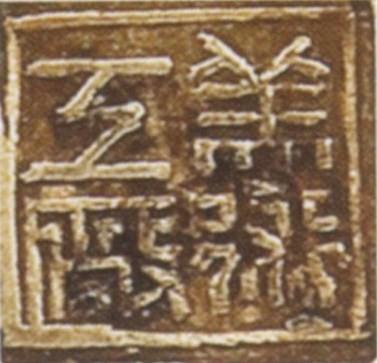 0
0 -
Wan Bao: Wan Bao Xin Zhi, lit. Ten Thousand Precious New Manufacture
Wan in Chinese conveys a very great number, hence the traditional greeting to the Emperor "Wansui, wansui, wan wan sui" - Ten Thousand Years, Ten Thousand Years, Ten Thousand Ten Thousand Years, or Long Live Your Majesty.
 0
0 -
Fu Li: Fu Li Zhi Zao, lit. Wealth Advantage Manufacture Make
There seems to be a common theme here ...
 0
0 -
Yongzeng: Yong Zeng Zi Zao, lit. Forever Bestow Self Make
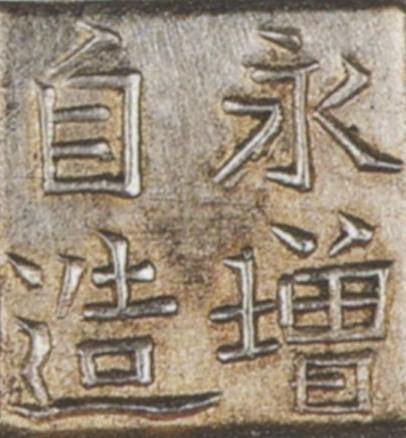 0
0 -
JCwaters and I have been working at identifying some of the Striped Tiger marks that Nick posted.
For completeness, we'll include them all here. These are read top-down-right-left in traditional Chinese fashion.
First up, Lao Tian Li: Lao Tian Li Zhi, lit. Old Heaven Advantage Manufacture.
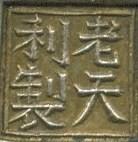 0
0 -
Very nice Nick and a rare bar indeed!
It nicely shows the comparative sizes of the Japanese and Chinese orders - the Fourth Class Striped Tiger was HUGE compared to the equivalent Rising Sun and Sacred Treasure.
0 -
These are wonderful images, thanks for sharing them.
Three of the Serbian orders - St Sava, White Eagle and Milos the Great - would rank in my Top 10 most beautiful awards ever produced.
The Milos the Great very occasionally appears at auctions. Any idea roughly how many of these were conferred?
Gavin
0 -
The similarity between these transitional or Early Second Type Double Dragons (1897?-1902) and the Variation 2 Second Type is evident.
These are just theories in the absence of more documentation.
But we can see an apparent evolution in design from the transitional awards to the Variation 2 Second Type to the Variation 1 Second Type.
0 -
One possible explanation is that the Variation 2 specimens were early awards. Later, Variation 1 which was more robust and easier to manufacture became the standard.
Supporting this theory is the fact that many of the transitional or "Early" Second Type Double Dragons have a very similar design - the star points are also composed of five groups of three rays.
These were awarded as late as 1902, the same year as the Second Type Double Dragons (1902-1912). There is very little by way of documentation but it is possible they were awarded as early as 1897 following the 1897 Memorial and Statutes proposing the change in the Double Dragon design to a more Western-style star.
Here is an exquisite transitional or Early Second Type Double Dragon (1897?-1902) also from the Harry Mohler Collection at Stanford University, courtesy of Richard La Tondre.
It is a Third Class First Grade. Note the green enameled rays. The 1897 Statutes also specified that the Third, Fourth and Fifth Class decorations were to have green enameled rays.
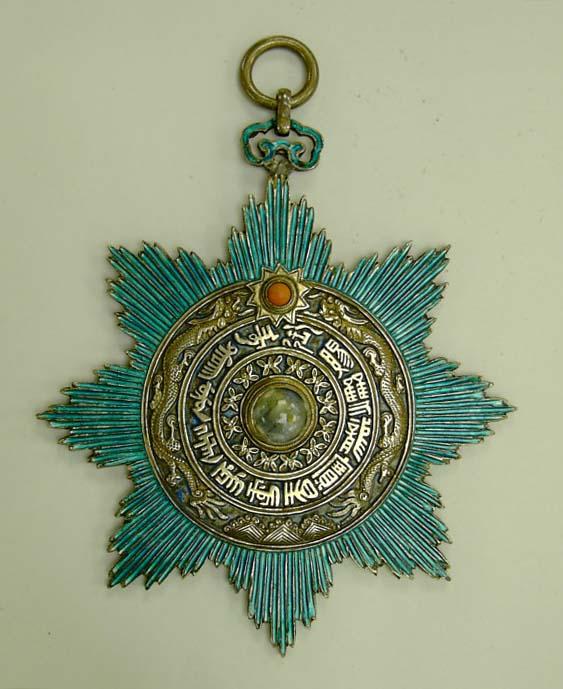 0
0 -
Here is a rare First Class Third Grade, Variation 2, from the December Morton & Eden auction.
 0
0 -
Some rare specimens (Variation 2) however have a different star corpus design - where the star points are composed of FIVE groups of three rays.
The overall appearance is noticeably different - with a finer construction, more delicate appearance, and more tapered rays.
Here is a Third Class First Grade neck badge from the Harry Mohler collection at Stanford University, courtesy of our friend Richard La Tondre.
 0
0 -
Here is another example, a beautiful Second Class Second Grade from Morton & Eden.
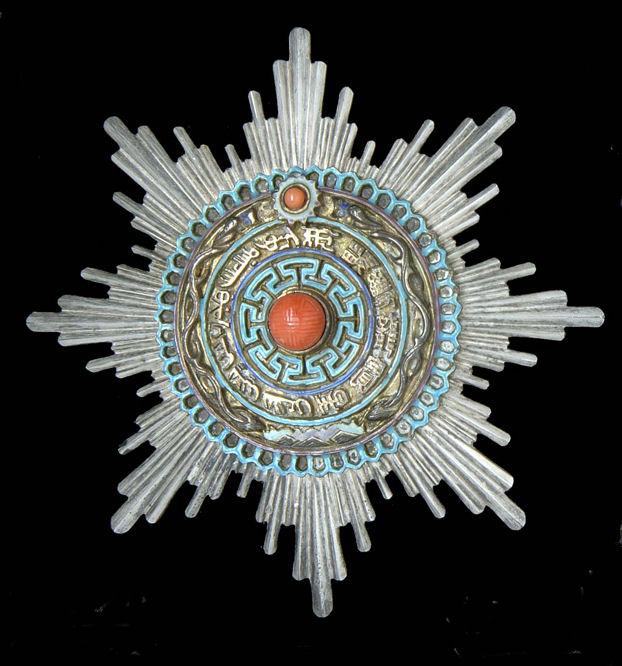 0
0 -
Most Chinese-made Second Type Double Dragons breast stars and Third Class badges have a similar star corpus design. These are an eight pointed star where each point is composed of three groups of three rays (Variation 1).
Here is the typical example - a Second Class Third Grade breast star and accompanying badge from the April 2011 Spink auction.
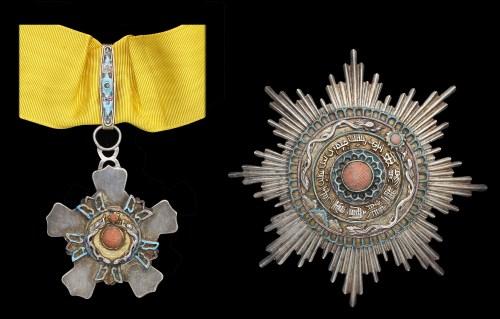 0
0 -
Nick, I was intrigued by #710 when I first saw it in the catalogue. It went for a high price too.
What's your take on it? I didn't know that women were awarded the Lion and Sun?
0 -
Interesting! The Order of National Glory (20 Feb 1938) bumped off the Blue Sky and White Sun (11 May 1929) as China's highest military award when it was instituted.
Many photos of Chiang has him wearing just the Blue Sky and White Sun, his favourite decoration, but here it is clearly displayed as second in precedence after the National Glory.
0 -
Beautiful! Thanks very much for sharing. I didn't know these came in lacquer boxes.
Could you show a photo of the stamp on the back of the medal?
0 -
Very nice! You did a great job restoring the hinge and must feel suitably pleased.
Restoring medals is one of the real joys of the hobby.
0 -
Hi Richard,
My book of Chinese Republic / Warlord medals (published in China) describes it simply as "Beiyang zhengfu shiqi jiang zhang" or Beiyang Government Period Merit Medal. Not very helpful I'm afraid.
Interestingly, it's listed on the same page as the mysterious Order of the Golden Lion.
Gavin
0 -
OK, now I'm really sounding ignorant. I did read the explanation from the first page but I'm still missing something.
I understand that ALL court nobles received their awards in these boxes for that particular time period.
But why did some foreigners receive these boxes whilst others did not?
0 -
Hey, great thread Nick! These absolute beauties have fascinated me for awhile.
It's still a little unclear to my ignorant mind HOW one received these awards.
Were they awarded to only a select elite - court nobles, certain foreigners, etc?
What determined that a German major army instructor would receive one of these very rare cased awards instead of the standard case?
0 -
Thanks for these brilliant new photos Nick!
The Auspicious Clouds would be one of my favourite orders. Professor Hata Shokichi certainly excelled himself in designing the very elegant Manchukuo awards.
0 -
Jules, I think you might struggle to find much in KL if Singapore is anything to go by.
I've scoured Singapore (stamp shops, coin shops, flea markets, antique stores) in my last couple of trips and there's little if any interest in medals. The one coin store I found with any medals had some common Soviet orders at very high prices. On the other hand, you could pick up jade carvings by the thousands ...
Gavin
0 -
Yeah I saw this one too but .... seller is Ukraine ... and accepts only international money transfer over $500.
You might well score a bargain.
Personally, I'm going to send my funds to that nice Mr Solomon Mbuto from the Nigerian Central Reserve Bank. He has $US 20 million that he needs to urgently store according to the email he sent me.
0




Topics moved to China
in South East & East Asia
Posted
Thanks Brian and Nick for your time in doing this.
It's great to see all the China (and Japan) topics in their own sections now for ease of reference, especially Nick's excellent thread on the Order of the Striped Tiger.